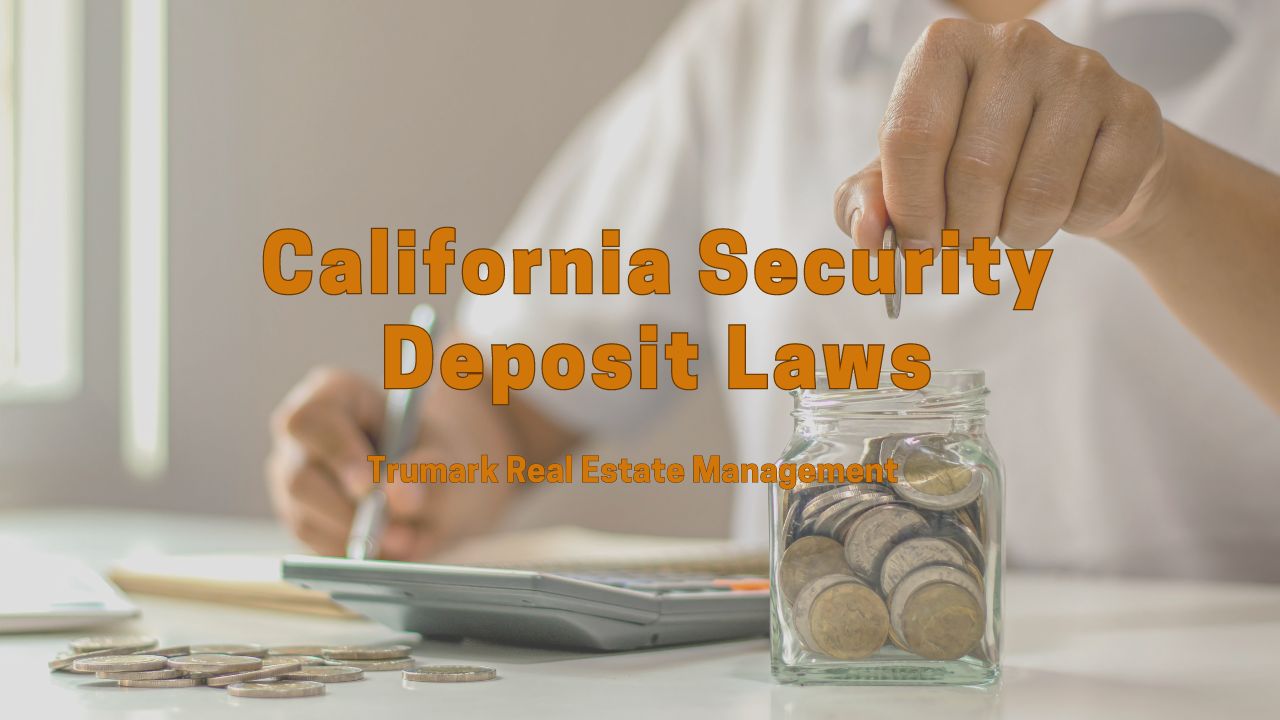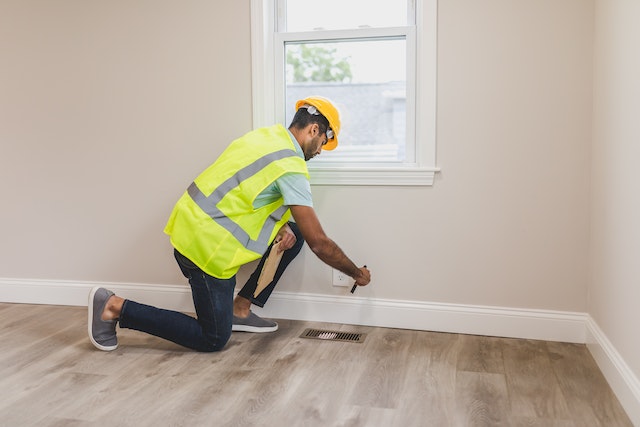
The California security deposit laws are contained under the state’s Civic Code 1950.5. These highlight what the landlord’s responsibilities are regarding the collection, handling, and return of a tenant’s security deposit. In today’s post, you’ll learn all the basics of the state’s security deposit rules.
Security Deposit Limit
There is a limit to how much California landlords can charge tenants when it comes to security deposits. How much security deposit to charge is dependent on whether you’re renting out a furnished or unfurnished property.
If renting out a furnished rental, the deposit must not exceed the equivalent of 3X the monthly rent. If renting out an unfurnished rental, the deposit must not exceed the equivalent of 2X the monthly rent.
Non-Refundable Security Deposits
In California, security deposits cannot be “non-refundable”. State law requires that all deposits be refundable to the tenant, minus allowable deductions.
Security Deposit Storage
As a landlord, it’s your responsibility to store your tenant’s deposit during the term of the lease. However, California doesn’t include specific requirements on how a landlord must do so. You can store it anyhow you like, whether in a normal account, an interest-bearing account, or even as a surety bond.

Security Deposit Receipt
In some states, landlords must provide their tenants with a receipt after receiving the tenant’s deposit. This isn’t, however, the case in California. You have no obligation to notify the tenant once you receive their deposit.
This notwithstanding, it’s still a good idea to do so. For record-keeping purposes, you’ll want to have written proof of certain details including when the tenant paid the deposit, how much they paid, and where you’re storing it.
Security Deposit Deductions
When returning the California tenant’s deposit, you can make deductions for:
- Any unpaid rent.
- The costs of cleaning the unit. Most leases require that tenants return their units in their original condition, less normal wear and tear.
- Any restoration costs mentioned in the lease agreement.
- Any unpaid utilities.
- Damages exceeding normal wear and tear.
Supposing the costs of deductions exceed the amount of the security deposit, you can seek additional damages from the tenant.
Normal Wear and Tear vs. Damage
The difference between these two types of damages is often a source of conflict between landlords and tenants.
Normal wear and tear refers to normal deterioration that a property undergoes with time. Whereas, damage refers to the destruction a property undergoes over time due to negligence or abuse. The following is a simple breakdown of what they entail.

Wear and Tear
The following are examples of standard wear and tear:
- Minor scuff marks on the walls
- Worn areas or light fading on the carpet
- Worn finish or minor scratches on the flooring
- Minor scuff marks or loose hinges on doors
- Faded blinds or curtains from sunlight
- Wear on the bathroom caulking
- Minor cracks on the walls
Excessive Damage
The following are examples of damage that go beyond normal wear and tear:
- Significant wall damage, such as large holes and/or deep scratches
- Pet damage, burns, stains, or large tears
- Water damage or extensive scratches
- Holes, broken door knocks, or broken locks
- Torn fabric or missing slats
- Broken tiles
- Large holes in the walls
Walk-Through Inspection
Landlords have a right to perform a walk-through inspection before a tenant can move out at the end of the lease. The purpose of the inspection would be to help you identify any potential issues that the tenant may have to fix before moving out.
You must follow certain steps if you decide to carry out a walk-through inspection like notifying the tenant of your intention to carry out a walk-through inspection of their rented premises. This must be in writing and must state the time and date of the inspection.

The tenant doesn’t have to agree to it. But if they choose to agree, then you must carry it out at least 2 weeks before the expiry of their lease. You must also give the tenant a notice at least 48 hours before the day of the inspection and present the tenant with a list of any repairs that they must do before the day of the final inspection.
Security Deposit Return
In California, landlords have up to 21 days to return a tenant’s deposit after they move out or have been evicted. If you’re not returning the entire deposit, you must provide the tenant with an itemized statement of deductions. The statement must include the following items:
- How much security deposit you’re returning.
- A list of deductions, as well as their good faith estimate.
- If the repair work has been completed, you must provide the tenant with receipts of the actual charges incurred on labor and materials.
- How much security deposit you’re returning to the tenant.
Sale of Rental Property
Selling a rental property doesn’t absolve a landlord from their security deposit obligations. You’ll have two options to choose from.
The first option is to transfer the deposit to the incoming landlord, minus allowable deductions. You must notify both the tenant and the incoming landlord of this. You must also notify the tenant of the new landlord’s name and address.
The other option is to transfer it to the tenant, minus allowable deductions. You must notify the new owner of the amount of deposit and the list of deductions.
Bottom Line
When requiring security deposits in California, you must abide by the state’s security deposit rules. These rules form a subset of the statewide California landlord-tenant laws.
If you have a question or need expert help managing your California rental property, look no further than Trumark Real Estate Management. We provide professional and reliable property management services to property owners in Pasadena, Burbank, and Glendale. Get in touch with us today to learn more about what we can do for you!
Disclaimer: Please note that the information provided in this blog is intended for general guidance and should not be considered as a replacement for professional legal advice. It is important to be aware that laws pertaining to property management may change, rendering this information outdated by the time you read it.
